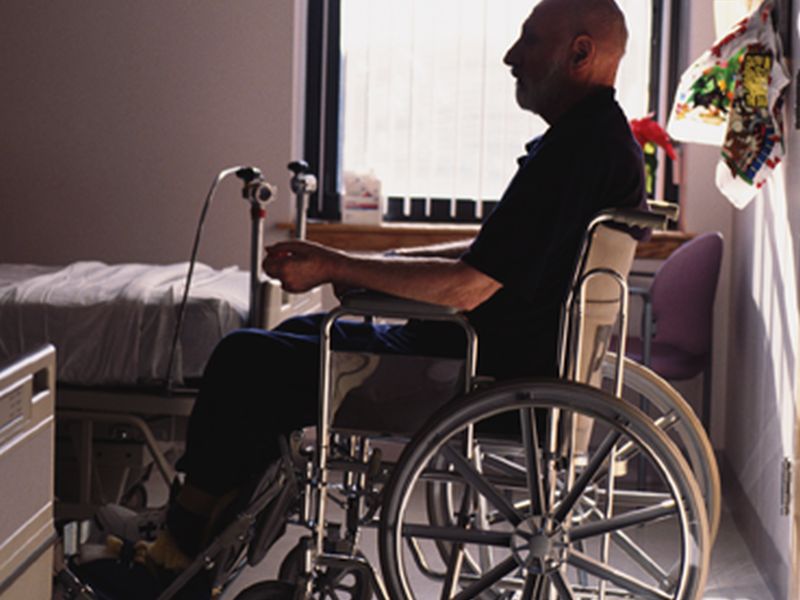
A microchip implanted in the brain helped paralyzed patients “type” on a computer via mind control, at the fastest speeds yet seen in such experiments.
It’s the latest step forward in research on “brain-computer interface” systems. Scientists have been studying the technology, with the aim of giving patients with paralysis or limb amputations more independence in their daily lives.
In the past several years, researchers at a few universities have given microchip implants to a small number of patients, which allowed patients to control robotic limbs using their thoughts.
And just last month, scientists reported on a noninvasive technology — using advanced brain imaging — that allowed four “locked-in” patients (with complete paralysis of all voluntary muscles) to answer yes-no questions.
All four patients had advanced amyotrophic lateral sclerosis (ALS) — commonly known as Lou Gehrig’s disease — and were completely unable to communicate.
The brain-computer technology is confined to the research lab for now. But scientists hope it will become available, in some form, for people to use at home within the next decade.
The new study involved three patients with severe limb weakness. Two had ALS, and the other had a spinal cord injury.
Each patient had one or two tiny silicon chips implanted in an area of the brain that controls movement. Signals from the patients’ brain cells could then be transmitted to a computer, where they were decoded into “point-and-click” commands that moved a cursor on an onscreen keyboard.
Two patients eventually learned to “type” at a speed of around 6 to 8 words a minute. That’s not far from the performance of your typical smartphone user, who achieves roughly 12 to 19 words per minute, the researchers added.
“This is obviously very early, and there’s a lot more work to be done,” said senior researcher Dr. Jaimie Henderson, a professor of neurosurgery at Stanford University School of Medicine in Stanford, Calif.
One of the biggest challenges will be making the system feasible for the real world, according to Henderson.
For now, the system is not user-friendly. It requires equipment and technical expertise that are not realistic outside of a lab.
But, Henderson said, the obstacles to a home version are surmountable. And he said he’s “hopeful” that can be done within the next 10 years.
The chips themselves are tiny — about the size of a baby aspirin — and are surgically implanted in the brain’s motor cortex (the movement command center). Each chip contains a network of electrodes that penetrate the brain to the thickness of a quarter.
From there, the electrodes are able to tap into the electrical activity of individual cells within the motor cortex.
Basically, when the patients thought about typing, the resulting electrical signals were delivered to the computer, interpreted by special algorithms, and then used to move an onscreen cursor.
The patients learned to move the cursor using different types of visualization, Henderson explained. One patient, for example, pictured her index finger tapping the keys.
Overall, the patients’ typing speeds were faster than any previously seen with this type of technology, according to Henderson. “We’re within the realm of communication capabilities that would be useful to people,” he said.
But to make the technology feasible for the real world, some challenges have to be overcome. For one, Henderson said, the technology needs to become wireless. It will also need to be “self-calibrating” and layperson-friendly.
“Right now, a technician needs to be present,” Henderson said.
Still, he and his colleagues say the technology could one day be applied to a range of devices, including smartphones and tablets.
The findings were published Feb. 21 in the journal eLife.
Jennifer Collinger is an assistant professor of physical medicine and rehabilitation at the University of Pittsburgh. She and her colleagues have been using brain-computer technology to help patients with paralysis or amputations learn to move a robotic arm — again, in the lab.
Several years ago, the Pitt researchers reported on a patient — a 53-year-old woman with quadriplegia (paralyzed in all four limbs) — who’d learned to move the robot arm using her mind. She’d accomplished feats like high-fiving the researchers and feeding herself chocolate.
Collinger agreed on the practical barriers to getting brain-computer technology into people’s homes.
There are also questions about how well the technology will work in the real world, and over the long haul.
“Can you maintain a high level of performance over time?” Collinger asked.
Still, she said the patients’ typing performance in this study was encouraging.
There is noninvasive technology aimed at helping patients with paralysis or ALS use computers — like eye-tracking devices. So, an implanted chip would need to perform well to be a good alternative, Collinger pointed out.
“I think we’re at the point where we can start to talk about whether this is a viable alternative to an approach like eye-tracking,” she said.
More information
The ALS Association has more on brain-computer interface.
Source: HealthDay

Leave a Reply